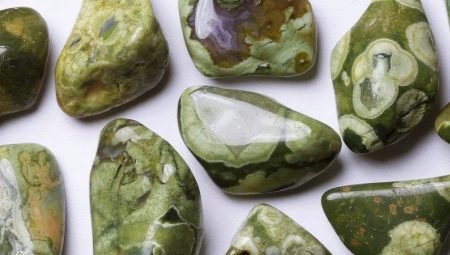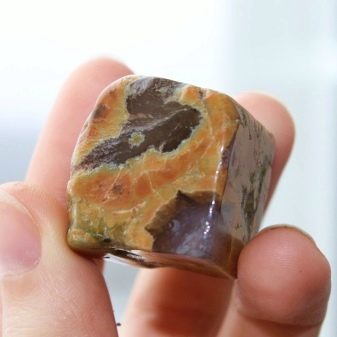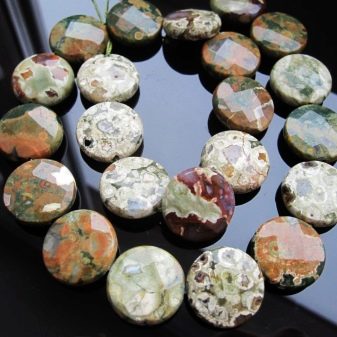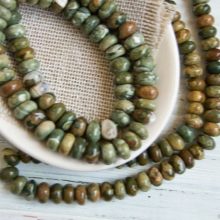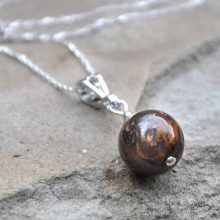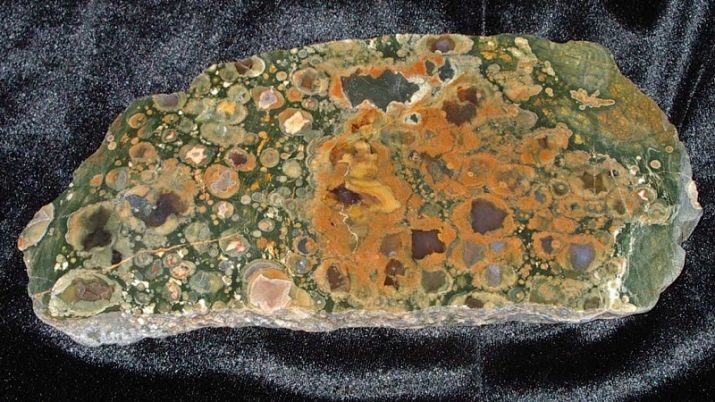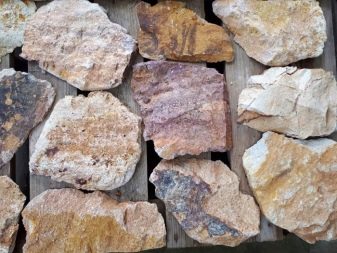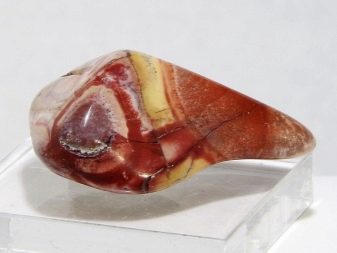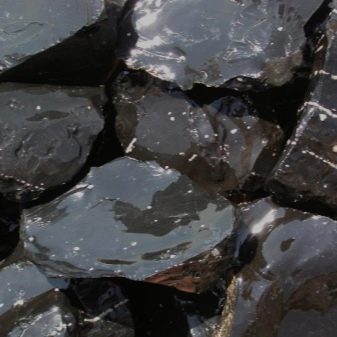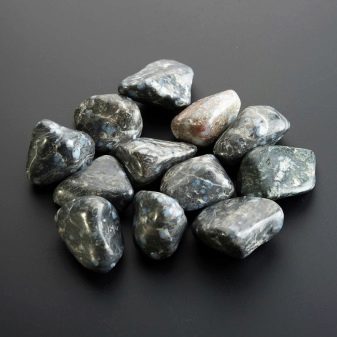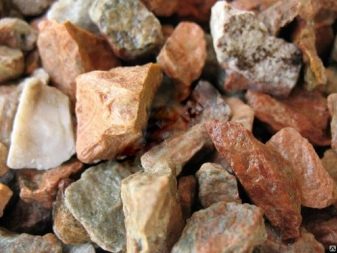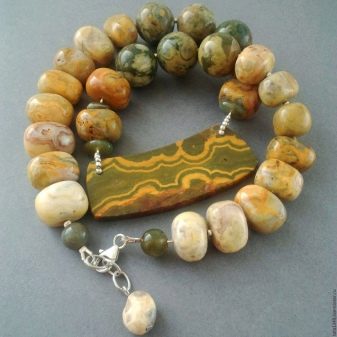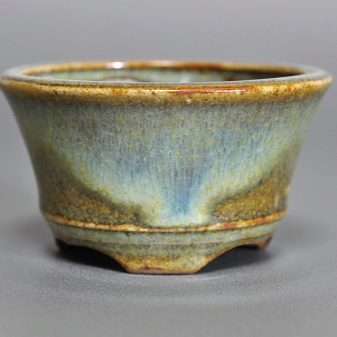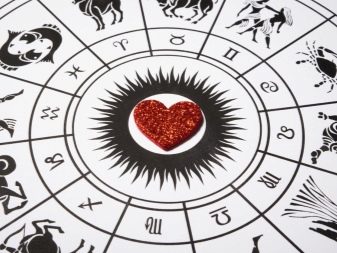Any stone has a unique composition, properties and appearance - it is impossible to find two identical in nature, unless, of course, they are not artificially recreated. Therefore, each mineral is considered a unique breed. It is beautiful even before it is processed by the master.
Volcanic rocks are especially surprising, because they contain admixtures of other minerals. An excellent representative of rocks can be considered rhyolite, or as it is also called - liparite.
A bit of history
The first name “liparit” was given to the mineral by the Lipari Islands, where it was first found. But in 1860, scientist Ferdinand von Richthofen decided to change the name of the stone to scientific, giving him a complete description, and called the stone rhyolite. It is a mixture of two Greek words “Riotos” and “Lithos”, which literally means “lava” and “stone”. In the composition of this rock a large amount of silica, traces of feldspar with a small admixture of quartz and a certain percentage of impurities of other rocks can be found.
Rhyolite is considered a volcanic rock because it appears due to the activity of a volcano. The process of education is quite simple. At the moment when the volcano erupts, lava spills onto the ground, and rhyolite is formed due to the rapid process of solidification of lava.
Kinds
The stone has a diverse shape, is found in nature in the form of domes, oblong needles, there are also small sections. Rhyolite is rarely found in complex geometric shapes. This is a rare phenomenon, given the way in which it is formed. Often you can find a mineral with a very large accumulation of ash around the stone or even inside the rock itself.
Due to its specificity and peculiarities of formation, liparite is often called volcanic glass (because it contains a large accumulation of volcanic glass due to its origin). This property gives the stone hardness. The average density is reached up to 5 points on the Mohs scale.
Some scientists make conditional parallels of rhyolite with granite, since in the first stone there are impurities of other rocks, such as tuffs or volcanic agglomerates. Liparit and granite are often compared, but they have a different composition and differ in the places of formation. The color palette of the rock is wide, the gradient stretch starts from white and comes to pink tints (due to pink quartz). More often than others sand-yellow color with different sub-tones in the form of green blotches occurs.
The composition of impurities of rhyolite also emit the composition of some natural metals, which gives a high density of the mineral. The stone has a gloss and a glassy shell, which gives it smoothness and play on the light. The features include the fact that Rhyolite of any form can endure any temperature drop, so it is famous for its durability.
But there is a small flaw in this, which lies in the heat resistance of the rock, at a temperature of 700 degrees Celsius the mineral will begin to melt.
We list the most common primes that occur in rhyolite.
- Obsidian - gives the stone a more brown tint.
- Pechstein - This is a volcanic glass, due to it there is an oily structure of gloss. It contains such shades as brown, black, green, yellow.
- Pumice. Due to it, porosity and irregularity, bubble formation are formed.
- Porphyry or porphyrite - rock formed from magma. The peculiarity of this stone is that it does not contain potassium feldspar.
Where is mined?
All volcanic rocks have the same properties. They appear in nature under certain conditions. There is nothing surprising in the fact that such stones are mined in areas where there are volcanoes. And there are enough places on the planet to provide an inexhaustible supply of liparite. In Russia, mining takes place in the Caucasus, in Kamchatka. Minerals are mined in Ukraine, in Kazakhstan.
This stone is in great demand in Italy, since various ornaments are made from it and then sold to tourists as souvenirs. In different parts of the world, weather and environmental conditions are different, and therefore the properties of rhyolite differ from each other.
Application
Rhyolite has many positive aspects. It is strong, withstands temperature extremes. It is not so difficult to mine. But at the same time, he did not find his wide and large-scale use in industry. It is often used for the construction of load-bearing walls due to its unique density and ability to endure enormous loads. Many people choose this stone also because it has a weak susceptibility to chemicals, and the resistance to temperature changes is quite high.
Much less often stone is used as a finishing material, most often it is used as a decorative one. The variety of rhyolite used in the decoration is called porphyry. Liparite crumb is used for the mixture in the manufacture of asphalt mass, which makes asphalt more durable and resistant to large masses of cars.
The only industry where the mineral really takes up a large place is the production of glass. Jewelry from liparit began to produce not so long ago. But at the same time, due to his structures and impurities, he did not find popularity in jewelry.
Stone is used as a material for fakes and analogues. Here for creative people just room for fantasy. Due to the unique similarity with jasper and thanks to the beautiful texture of rhyolite make jewelry - cabochons or tumbling. You can find vases or ornaments for decoration from this mineral.
Medicinal qualities
As you know, for each sign of the zodiac is inherent in a certain mineral. Many argue that minerals can also heal or relieve a person’s emotional background. Rhyolite also has its own healing properties. He is credited with stabilizing a person’s psychological state, normalizing mood, relieving arousal or apathy. It increases physical activity, reduces pain in the physical plane. It does not cure illnesses, but promotes healing.
Many have noted that stone contributes to the rapid healing of wounds, the resorption of bruises. Perhaps this is even more than a controversial issue, but the main task of any treatment is to set up a person in the desired fashion.
Thoughts are material, so there is nothing surprising in the fact that if a person believes that his stone, that is, rhyolite, will help him overcome some kind of ailment, this is what happens.
Magic abilities
As mentioned earlier, each stone is inherent in a particular person not only for medicinal purposes. Many generations see stone as a source of strength, power and knowledge. Therefore, minerals are often used not only for medical purposes, but also in various kinds of rites and magical rituals. Believe it - everyone will give their specific answer. The following is why rhyolite is considered a magic stone.
It is believed that liparite is a mineral that symbolizes tender feelings, and is considered a stone for hearts in love.. Because it is because of its density and strength symbolizes a long and strong relationship.
Rhyolite has special energy waves that help people in love to preserve their feelings much longer. It is because of this that the mineral is often bought as a talisman, presented with the expectation of a strong and long-term relationship.It is believed that a thing made of liparite will be an excellent gift to the newlyweds, so that it holds their feelings even stronger.
Rhyolite is suitable for each of the signs of the zodiac, but it is still considered a coastal stone for such signs as Aries, Leo, Sagittarius and Scorpio. And Capricorns, Virgos and Cancers should choose for themselves a talisman in the form of a rhyolite stone, but with an admixture of obsidian. This will help achieve your goals and will be successful in all endeavors. Liparit will help and protect those who have good intentions and harmony inside. Everyone can believe it or not. But the fact that rhyolite has unique qualities and mineral composition is beyond doubt.
In the next video you can take a closer look at rhyolite.
